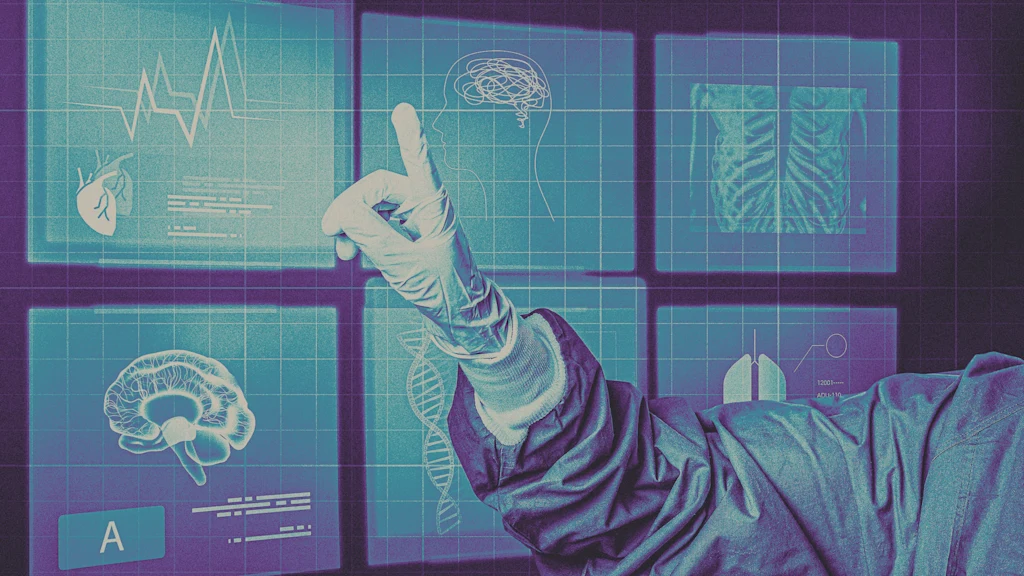Every day, we hear about new algorithms, groundbreaking analyses, and the potential for AI to revolutionize patient care. Yet, for many physicians and their teams on the front lines, AI can feel like another layer of complexity, another screen to navigate, or another barrier between them and their patients.
The reality is, most doctors don’t compete with each other; they fight to survive under the weight of the healthcare system’s administrative demands. Providers face burnout from outdated processes, complex government regulations, and the confusing world of insurance payers.
While many AI tools promise relief, too often they create new points of friction—interfaces to learn, workflows to manage, or alerts to respond to—adding rather than removing complexity. This disconnect between AI’s promise and its practical application highlights a fundamental flaw.
It’s time for a different approach.
For AI to be truly impactful for doctors, it needs to recede into the background. Specifically in a clinical setting, AI should be present but not visible, perceptive but not intrusive, and powerfully helpful without demanding attention or detracting from time with patients. Unfortunately, contrary to their intent, many of today’s AI tools can actually increase workloads rather than decrease them.
Engineering AI to Adapt to Providers
In healthcare, we’re emerging from an era where technology has played too prominent a role in the patient-provider interaction. Hardware interfaces, supporting digital charting, coding, and billing, consumed valuable energy that should have been dedicated to patient care. While electronic health records (EHRs) initially promised efficiency by moving providers away from paper charts, the demands and growing complexity of documentation and reporting requirements quickly outpaced these EHRs’ capabilities. This led to a new layer of burnout for providers and a less personal experience for patients.
More recently, the rapid deployment of AI ambient listening solutions, though well-intentioned and helpful with transcription, can produce unintended consequences. Providers sometimes find themselves correcting the mistakes of poorly trained AIs or spending hours after clinic responding to messages, reviewing alerts or actioning downstream steps needed to complete the patient visit, adding to cognitive overload and burnout.
These early one-size-fits-all AI tools often feel like half measures, designed in silos or by technology teams that have failed to truly grasp the holistic challenges doctors face with their time and efficiency. Every minute spent troubleshooting technology, correcting errors, or navigating a clumsy interface is a minute taken away from precious eye contact, active listening, and the invaluable opportunity to offer true empathy and build connection with patients.
Of course, new technology always requires users to learn new ways of doing things, but instead of asking physicians to adapt to AI, true adoption depends on designing AI to adapt to them. In the context of the doctor’s office, this means:
- By Doctors, For Doctors: For AI to truly recede into the background and become a reliable partner, its precision cannot be overstated. This level of contextual understanding of the doctor’s world is not an inherent feature of generic algorithms; rather, it needs to be painstakingly forged with AI models rigorously trained with extensive input from doctors and vast, de-identified real-world clinical data.
- Deep Medical Intelligence: Unlike generic AI, systems should be grounded in vast, medical language and structured data that is medically unique to the needs of each doctor and their area of expertise. This allows AI to understand the subtle language of various specialties like dermatology or ophthalmology, delivering insights that match the needs and rhythms of each clinical domain.
- Seamless Workflow Integration: There should be no new disruptions. AI should enhance existing workflows, reducing clicks and administrative burdens without forcing radical changes. For example, ambient listening technology can capture clinical conversations in real time, seamlessly, safely, and without disrupting the flow of discussion between doctor and patient.
- Augmenting, Not Replacing: The commitment must be to responsible AI. Tools should offer intelligent suggestions, surface crucial information, and automate repetitive tasks, always ensuring the physician maintains control and clinical judgment. In this model, AI acts not as a replacement, but as a silent partner—a trusted copilot, bolstering clinical expertise without overshadowing it.
- Building Trust: Trust in AI doesn’t come from splashy features—it’s earned through consistency, safety, and clarity. Systems should surface when they’re helpful, and step back when they’re not. When AI respects clinical boundaries, avoids false alarms, and delivers reliable results, providers learn to trust it as part of the care team, not a replacement for it.
Quiet transformation
The future of healthcare AI isn’t about shouting from the rooftops about technological prowess. It’s about the quiet, profound transformation that occurs when technology enhances care without announcing itself. It’s about technology acting as a catalyst for deeper human connection, helping doctors to be fully doctors again and patients to feel truly heard and cared for.
The goal is clear: build AI that becomes woven into the fabric of the practice, thoughtfully amplifying clinical excellence and fostering unparalleled patient experiences. When we design technology that respects the time, intelligence, and humanity of providers, we allow the patient-provider connection to shine. This is the next era of healthcare, defined not by what AI can do but by how effortlessly it helps providers do what they do best.
The early-rate deadline for Fast Company’s Most Innovative Companies Awards is Friday, September 5, at 11:59 p.m. PT. Apply today.
